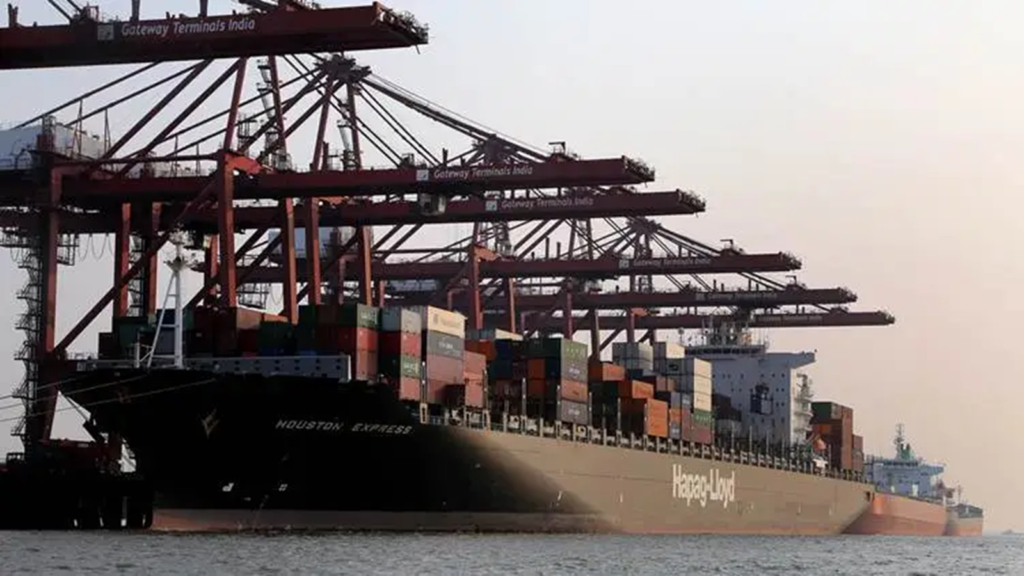High Tariffs are Responsible for Weak Exports, Says GTRI

Image Source: The Indian Express
According to a report released by the Global Trade Research Initiative (GRTI), the main reason behind India’s weaker export performance includes higher tariffs.
“Many Indian firms choose not to use the FTA route when import duties are low, as FTA-related compliance costs do not justify the tariff benefits. For instance, in the case of India’s FTA partners, many imports occur at zero or low Most Favored Nation (MFN) duties,” the report said.
The GTRI said that India has higher import duties, so eliminating these duties under FTAs gives a price advantage to products from FTA partner countries.
The tariff discrepancy was among the factors why India’s three key Free Trade Agreements (FTAs) with ASEAN, South Korea, and Japan were not successful, as per the think tank, which ultimately resulted in India’s merchandise trade deficit with these partners increasing more than its global trade deficit.
“Specifically, the deficits grew by 302.9% with ASEAN, 16.41% with South Korea, and 138.2% with Japan, compared to an 81.2% increase in the global deficit. This comparison is based on the data from the pre-FTA period (2007-09) and the recent trade data (2020-22),” the report said.
As the broader economic policy landscape under the current scenario is plagued by an environment of intellectual bankruptcy that is adversely affecting its macro-economic policy making and the implementation of government mechanisms.
However, a positive trend in terms of trade is in services, where India’s service output levels have outperformed those of the US, Europe, and China since late 2022. It has helped India narrow down its current account deficit too, which was growing because of a constant rise in merchandise imports from Russia and China.
India’s exports to these FTA partners have increased at a lower rate than its imports. For instance, with ASEAN, exports grew 123.9%, and imports by 175.7%; with Japan, exports grew by 56.4%, and imports by 98.5%, and with South Korea, exports increased by 81.9%, and imports by 127.3%, the report stated. For finished products, India’s tariffs are slightly lower for only one tariff line of China.
These imports constitute 80% of the cost of mobile phones, which are India’s largest product out of the $75 billion electronic sector. The findings showcased that for India to integrate into global supply chains, its tariffs on inputs should at least match or be less than that of its competitors.
Team Profile

- News Writer
- Palak Chauhan is a dedicated professional who holds a bachelor's degree in Journalism and Mass Communication from Amity University Mumbai. Her academic journey is complemented by practical experience gained through internships at prestigious media outlets such as CNBC TV 18 and Dissent Times. Palak's educational background and hands-on experience reflect her commitment to the field of journalism, showcasing a blend of theoretical knowledge and real-world application.
Latest entries
 English31 January 202410 -Kuki- Zomi – Hmar MLAs Submit Memo to PM Modi Seeking an Alternative Solution to the Manipur Crises
English31 January 202410 -Kuki- Zomi – Hmar MLAs Submit Memo to PM Modi Seeking an Alternative Solution to the Manipur Crises Business & Economy31 January 2024Budget 2024 Expectations: Deloitte Suggests PLI Scheme Expansion for Job-Intensive Sectors
Business & Economy31 January 2024Budget 2024 Expectations: Deloitte Suggests PLI Scheme Expansion for Job-Intensive Sectors Business & Economy31 January 2024Rs 1.2 Lakh Crore Profit! Reliance Industries Shares Recorded Their Best Day in Over 3 Years
Business & Economy31 January 2024Rs 1.2 Lakh Crore Profit! Reliance Industries Shares Recorded Their Best Day in Over 3 Years English30 January 2024China’s ‘Break New Ground’ Message to France After Macron Visits India.
English30 January 2024China’s ‘Break New Ground’ Message to France After Macron Visits India.









